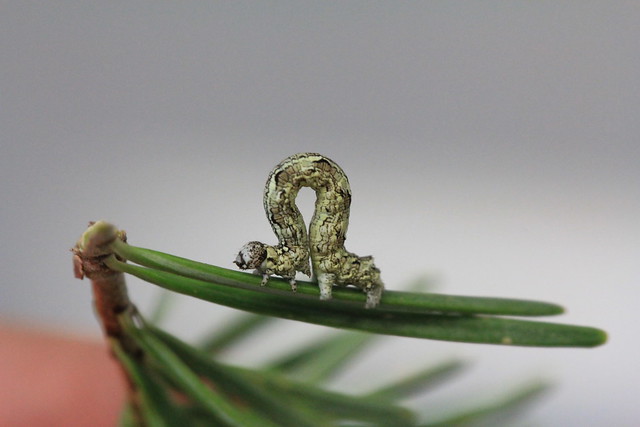
A caterpillar that’s been rarely observed in the wild is about to join with another species of inch worms to wreak destruction upon two national forests in New Mexico. The culprit, called Janet’s looper caterpillar, feeds on the needles of high-elevation fir and spruce trees, but this insect has rarely been observed for nearly 50 years.
However, the Janet’s looper appeared in greater numbers this year, and it has a partner in crime: hordes of hungry Douglas-fir tussock moth caterpillars. Their collective appetites have reached outbreak status—severely stressing fir, spruce, and pine trees.
If this destructive duo eats most of the needles from an entire tree, which they are inclined to do, that tree cannot make food and becomes vulnerable to yet another destructive insect: the bark beetle. Trees that have been mostly defoliated by these caterpillars are at greater risk of dying, which in-turn increases the amount of dead wood available to fuel catastrophic wildfires.
The Forest Service Forest Health Protection program (FHP), which provides insect and disease support to the nation’s national forests, began monitoring these moth outbreaks as soon as damage was detected. The outbreaks have already impacted more than 9,000 acres on the Santa Fe National Forest and approximately 1,800 acres on the Cibola National Forest, threatening tree health in many recreation areas.
And it’s not just the trees that are stressed. Hairs from the Douglas-fir tussock moth caterpillar can cause allergic reactions in humans and animals. While itching is the most common symptom, adverse health effects can also include rashes, watery eyes, runny nose, cough, shortness of breath, wheezing, and chest tightness.
Because the Janet’s looper caterpillar so rarely appears, little is known about its life cycle, preferred hosts, or natural enemies. So to help fill-in knowledge gaps and monitor the impact of outbreaks, FHP staff have joined forces with New Mexico State Forestry, the Forest Service’s Youth and Veterans Program, and Rocky Mountain Youth Corps.
This collaboration also provided opportunities for Rocky Mountain Youth Corps program participants to gain hands-on forestry and forest health experience. Forest Service employees teach them how to identify tree species and insect injury, record forest stand data, collect various insect life stages, and assess insect flight activity by hanging monitoring traps.
The data collected from these efforts will help inform management decisions during future outbreaks by anticipating the potential impacts from each species. FHP will continue to monitor each outbreak, study the insects, and provide funding to the affected national forests to reduce the impacts of both caterpillar species upon forest stands.




